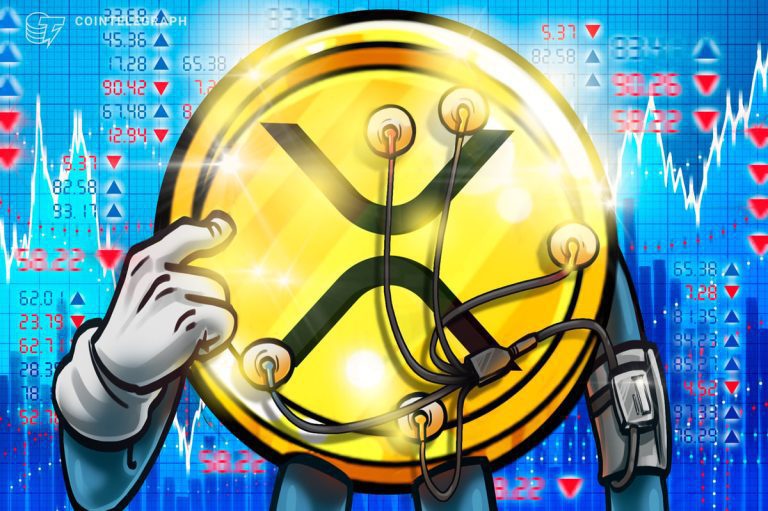On March 19, Ripple CEO Brad Garlinghouse announced that the company has been cleared by the Securities and Exchange Commission on $1.3 billion unregistered securities offer. Following the news, XRP (XRP) surged to $2.59, but profits gradually declined as cryptocurrency experienced a 22% revision and fell to $2.02 by March 31st.
Investors are worried about a deeper price adjustment on the horizon as XRP has been 39% below $3.40 since January 16th. Additionally, XRP permanent futures (reverse swap) demonstrate strong demand for leveraged bear bets.
Demand for bearish bets has increased amid declining XRP
If shorts demand dominates, then if Longs seek more leverage and negative, the funding rate will be positive. In neutral markets, they typically fluctuate between 0.1% and 0.3% per 7 days to offset exchange risk and cost of capital. Conversely, negative funding rates are considered a strong bear signal.
XRP futures 8-hour funding rate. Source: laevitas.ch
Currently, XRP’s funding rate is -0.14% per 8 hours, converting it to a cost of 0.3% per week. This shows that bearish traders are paying for leverage, reflecting the weaker investors’ trust in XRP. However, traders should assess the demand for XRP margins to determine whether bearish sentiment is beyond the futures market.
Unlike derivative contracts, which always require both buyers and sellers, the margin market forces traders to borrow Stablecoins to buy Spot XRP. Similarly, bearish traders can borrow XRP to open short positions and predict price drops.
Longer XRP margin ratio in OKX. Source: OKX
The long short margin ratio of XRP on OKX doubles in favor of long (buyers) that is close to the lowest level in 6 months or more. Historically, extreme confidence has pushed this metric by more than 40 times, but measurements below 5 times are usually considered bearish signals.
President Trump has raised awareness of XRP and paved the way for future price increases
Despite cryptocurrencies gaining mainstream media attention, both XRP derivatives and margin markets have shown bearish momentum. In particular, on March 2nd, US President Donald Trump, along with XRP, Solana (SOL) and Cardano (ADA), mentioned as a potential candidate for the country’s strategic digital assets reserves.
Google search trends for XRP and BTC. Source: GoogleTRends/Cointelegraph
For a short period of time, the trend in Google search for XRP surpassed the BTC search trend from March 2nd to March 3rd. A similar spike occurred on March 19th following Ripple CEO Garlinghouse’s comments on the expected SEC domination. XRP is the third largest cryptocurrency by market capitalization (excluding Stablecoins), and benefits from early adoption and high liquidity.
Related: Is XRP prices an opportunity around $2 or the end of the bull market? Analyst weight
Interactive Broker, a global traditional financial intermediary, announced on March 26th that it will expand its cryptocurrency offerings, including SOL, ADA, XRP and DogeCoin (DOGE). Since 2021, the platform has supported trading of Bitcoin (BTC), Ether (ETH), Litecoin (LTC), and Bitcoin Cash (BCH) pairs.
The wider recruitment by traditional intermediaries and rising search trends from Google further strengthen XRP’s position as a major Altcoin. It also sets the stage for increased inflows as macroeconomic conditions improve and retail investors are actively seeking Altcoins with strong marketing appeals as an alternative to traditional finance such as Ripple.
This article is for general informational purposes and is not intended to be considered legal or investment advice, and should not be done. The views, thoughts and opinions expressed here are the authors alone and do not necessarily reflect or express Cointregraph’s views and opinions.




